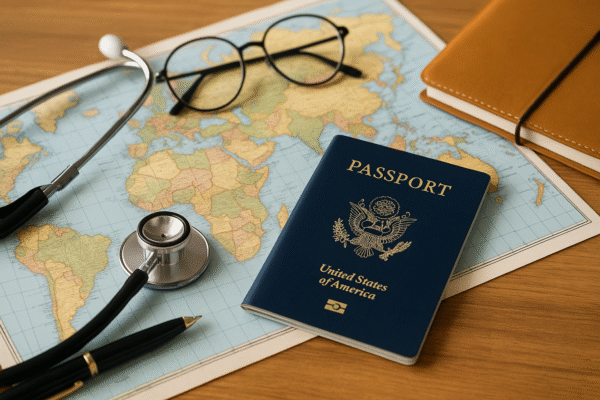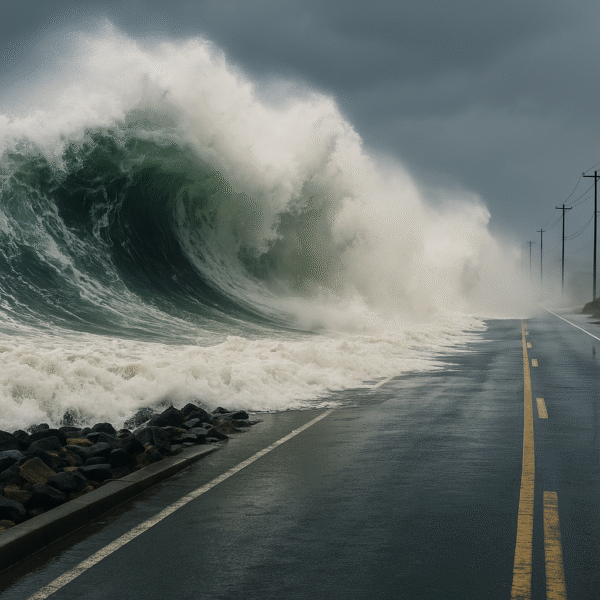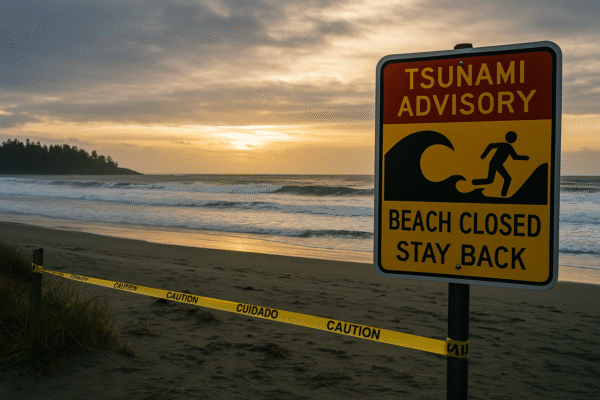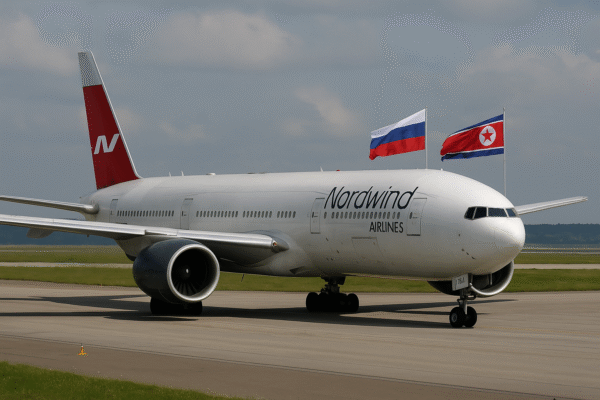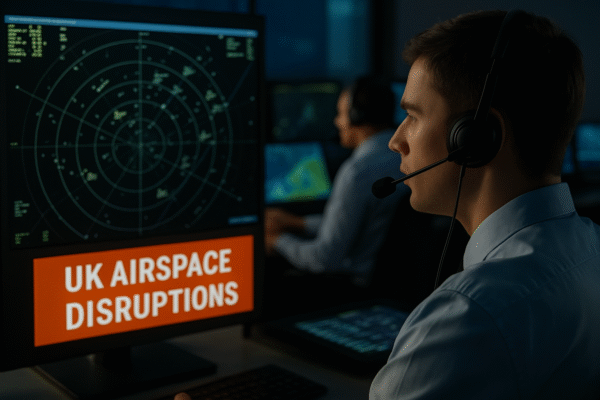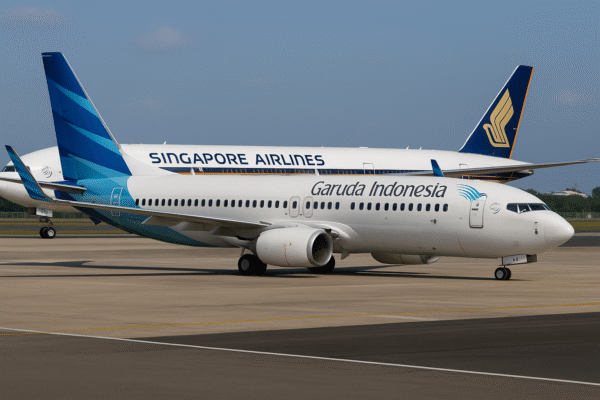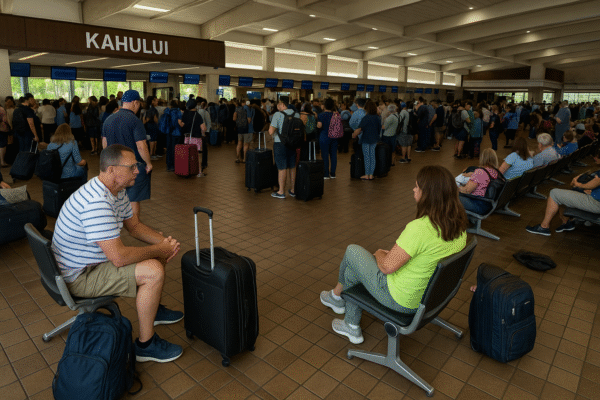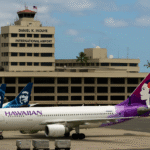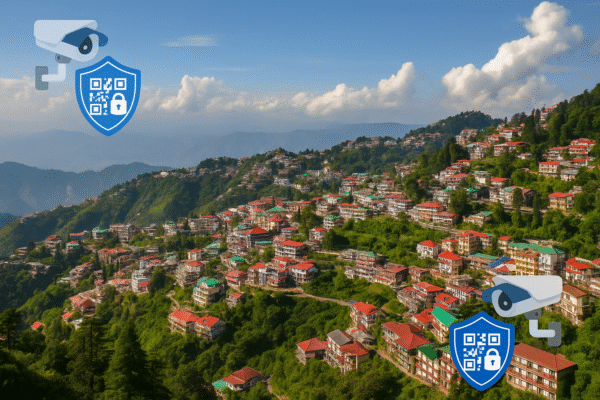Thousands of tourists are facing massive travel disruptions across Hawaii after a tsunami alert—prompted by an 8.8-magnitude earthquake near Russia’s Kamchatka Peninsula—led to the cancellation of at least 35 commercial flights on July 30. Major airports on the islands, including Kahului (OGG), Kona (KOA), Hilo (ITO), and Lihue (LIH), were severely affected as airlines acted swiftly to prioritize passenger safety.
The Pacific Tsunami Warning Center issued the alert following the undersea quake, prompting Hawaiian authorities and aviation officials to implement immediate safety protocols. Although the tsunami threat has since been lifted and no large waves made landfall, the alert caused a temporary but severe disruption to Hawaii’s inter-island and mainland-bound air traffic.
Airport Chaos Grips Hawaii’s Top Tourist Islands
Maui’s Kahului Airport saw the highest number of cancellations. According to real-time data from the FAA and FlightAware, United Airlines canceled 4 flights (25% of its daily operations) while Hawaiian Airlines canceled 4 flights (14%) and delayed another 4 (5%).
On the Big Island, Kona Airport recorded 3 Delta Air Lines cancellations (13%) and 2 by Alaska Airlines (25%), while Hilo Airport also reported inbound and outbound flight disruptions.
Lihue Airport on Kauai experienced delays and cancellations as well, including 1 Alaska Airlines cancellation (12%) and a delay (6%). Even Honolulu’s Daniel K. Inouye International Airport (HNL), the state’s primary international gateway, faced ripple-effect delays due to aircraft diversions and rescheduling.
Airlines Respond: Flight Operations Slowly Resume
Now that the Pacific Tsunami Warning Center has downgraded the threat and lifted the advisory, airlines are slowly resuming operations. However, with so many passengers displaced and aircraft out of position, recovery is expected to take time.
United Airlines, Hawaiian Airlines, Delta Air Lines, and Alaska Airlines all issued advisories to customers urging them to check their flight status online or via mobile apps before heading to the airport. Many are offering fee waivers for flight changes.
International carriers such as Jetstar and WestJet also faced challenges as connecting flights from Australia, Canada, and Japan were affected.
Impact on Hawaii’s Travel Sector
The timing of this natural event could not have been worse for Hawaii’s tourism economy. July is peak travel season, with thousands of visitors arriving daily to enjoy the islands’ beaches, volcanoes, and resorts. The unexpected cancellations disrupted the travel plans of both vacationers trying to depart and new arrivals looking to begin their holidays.
Hotel bookings across Maui, the Big Island, and Kauai surged as stranded passengers scrambled for accommodations. However, many properties reported being at or near full capacity, leading to long queues and growing frustration at both airports and hotel lobbies.
Restaurants and local businesses in affected tourist districts also saw a surge in demand, with travelers stuck on the islands spending unexpected extra nights.
Safety Protocols and Emergency Response
Hawaii’s state and county emergency management offices activated tsunami preparedness plans, including closing beach parks and evacuating low-lying areas temporarily. Although no damaging tsunami waves hit the islands, authorities praised the swift response of both local agencies and the aviation sector.
“We’re grateful there was no actual tsunami event, but these precautions are necessary to safeguard both residents and tourists,” said Adam Weintraub, spokesperson for Hawaii Emergency Management Agency (HI-EMA). “The coordination between our airports and airlines was critical in reducing panic and ensuring safety.”
The Hawaii Department of Transportation (HDOT) confirmed that all state-managed airports are now fully operational, although delays continue to ripple through the system.
Advice for Affected Travelers
Authorities recommend that travelers remain patient and continue to monitor their airline’s digital communication channels. Those whose flights were canceled or delayed should take advantage of the rebooking flexibility currently being offered by most airlines.
For emergency accommodation assistance, Hawaii Tourism Authority (HTA) suggests contacting travel providers or local visitor information centers. Travelers should also consider enrolling in the U.S. State Department’s Smart Traveler Enrollment Program (STEP) for future travel alerts.
A Wake-Up Call for Travelers
The incident underscores the importance of staying informed and flexible when traveling to destinations located in natural disaster-prone zones. While Hawaii has extensive tsunami detection and response systems, the tourism industry remains vulnerable to global seismic events.
As normalcy returns, the Hawaii Tourism Authority has reiterated that the islands remain safe and open for travel, and the Aloha spirit is strong despite the temporary disruption.
For more travel news like this, keep reading Global Travel Wire


